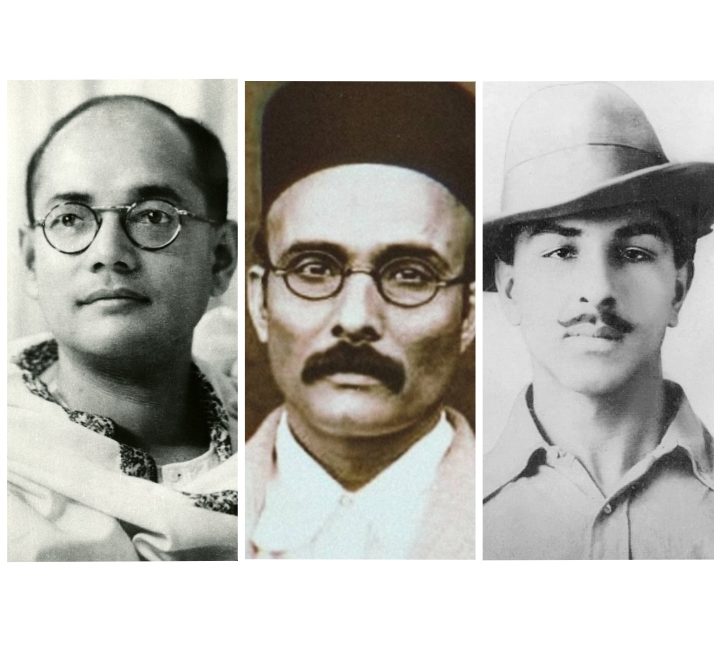Connections between Veer Savarkar, Shaheed Bhagat Singh and Netaji Subhash Chandra Bose.


Nehruvian Marxists have repeatedly tried to hide the connections which Veer Savarkar had with Shaheed Bhagat Singh and Netaji Subhash Chandra Bose, but fortunately, they never succeeded. Saying Veer Savarkar didn’t had a connection with Bhagat Singh and Netaji Subhash Chandra Bose doesn’t hold a single mole of water. Veer Savarkar not only inspired them but also indirectly helped them in many ways. Let’s find out how-
Veer Savarkar wrote a book about the first war of independence which got published in 1909. This book which he wrote became widely popular and became a basic book for every freedom fighter. Bhagat Singh drew a lot of inspiration from Veer Savarkar. In fact the criteria to recruit freedom fighters into the HSRA (Hindustan Socialist Republican Association)by Bhagat Singh was whether the new recruit read the book written by Veer Savarkar on the First War of Independence, this was revealed by a Congressman Durga Das Khanna who was also a former member of Hindustan Socialist Republican Association (HSRA).The copy of this book was found with every revolutionary who was accused in the Lahore Conspiracy Case in 1930s and later Rash Behari Bose and Netaji Subhash Chandra Bose got this book of Veer Savarkar published in Japanese. 1857 uprising today is known as First War of Independence because of Veer Savarkar.
Veer Savarkar provided a lot of support to Rash Behari Bose who called Veer Savarkar as a great Indian patriot and a very symbol of valour and sacrifice. Rash Behari Bose was the one who along with Subhash Chandra Bose took up the Indian National Army. Veer Savarkar asked the youth of the country to join the British army with an objective in his mind. Savarkar asked the youths to join the British army and take training of warfare from there and when the time comes, leave the Army to join the fight for the freedom of this country. Savarkar tried to create another Sepoy mutiny from the British army. Netaji Subhash Chandra Bose himself while addressing in a radio in 1945 said that it was Savarkar who enlisted a lot of young men into the Indian Army and most of them crossed over to the INA from the British army and that is how INA got its recruits.
DISCLAIMER: The author is solely responsible for the views expressed in this article. The author carries the responsibility for citing and/or licensing of images utilized within the text.
